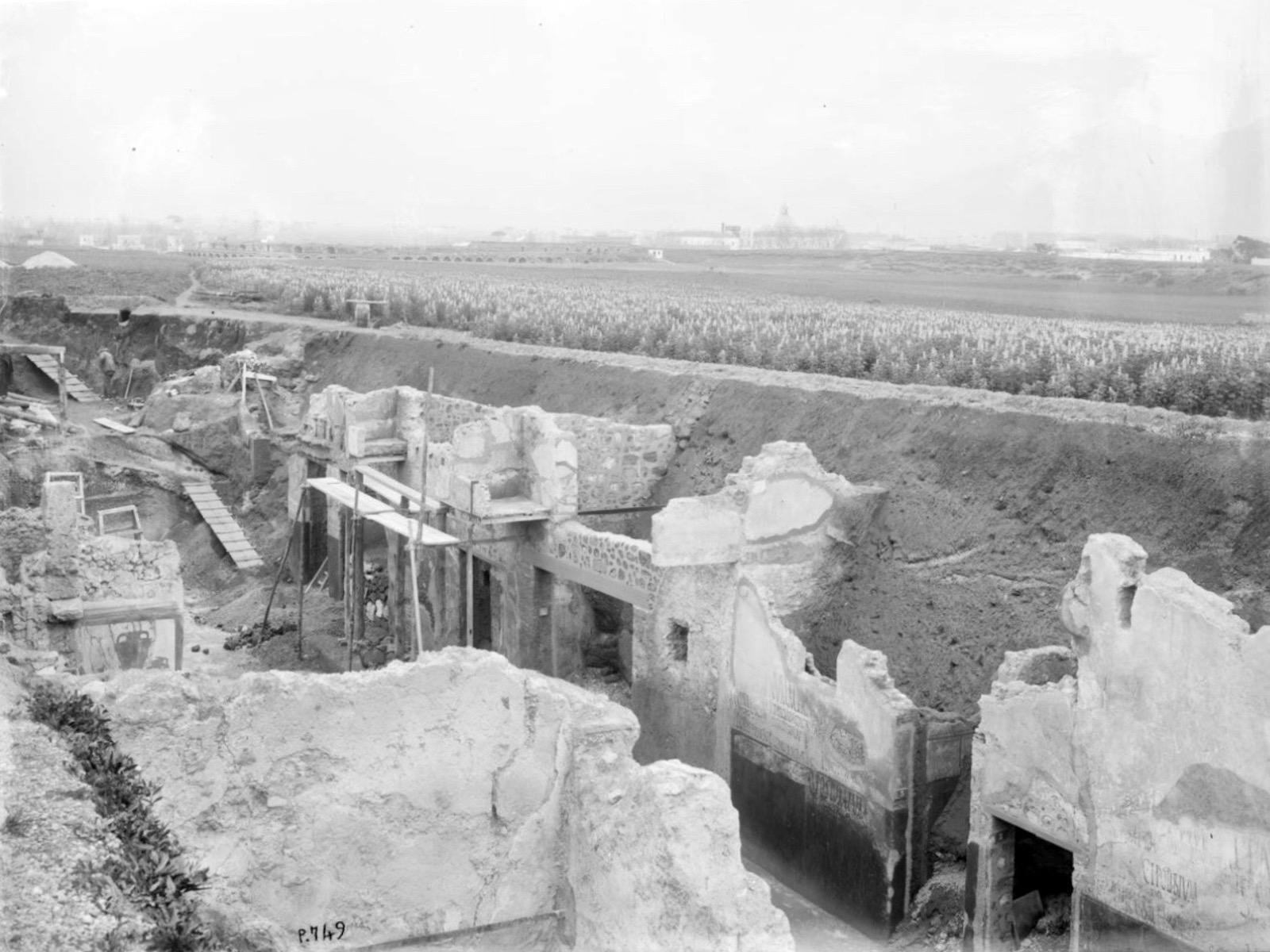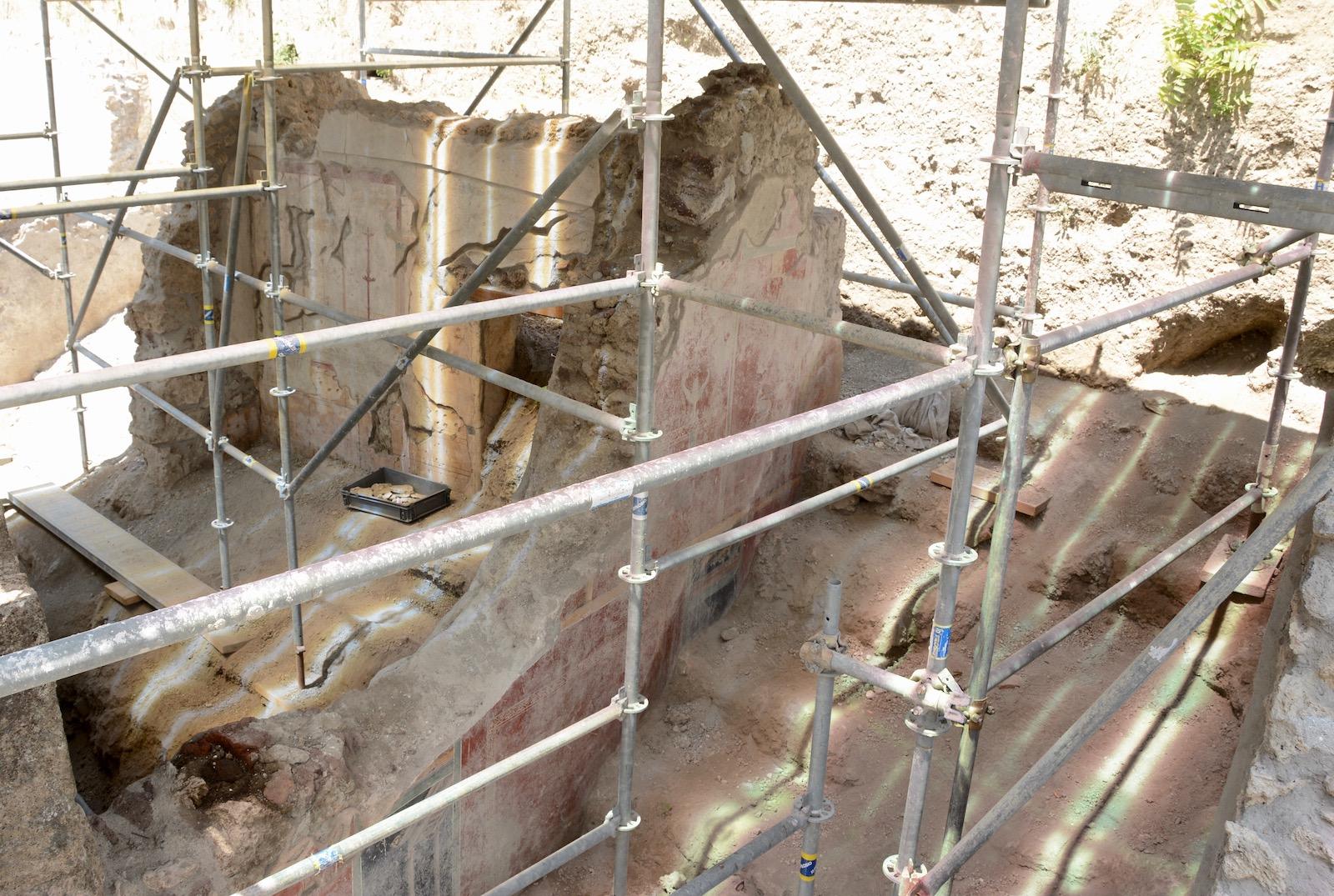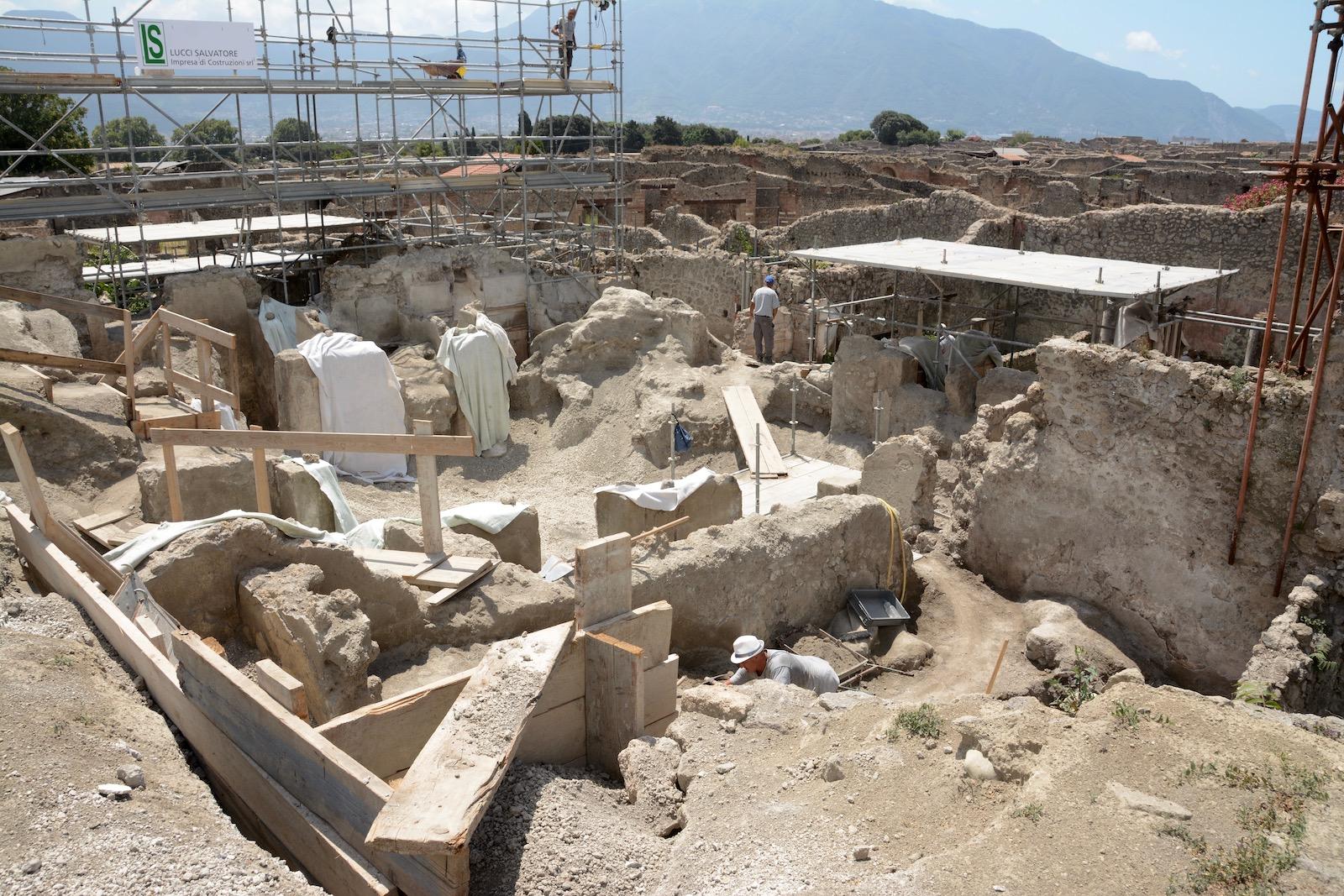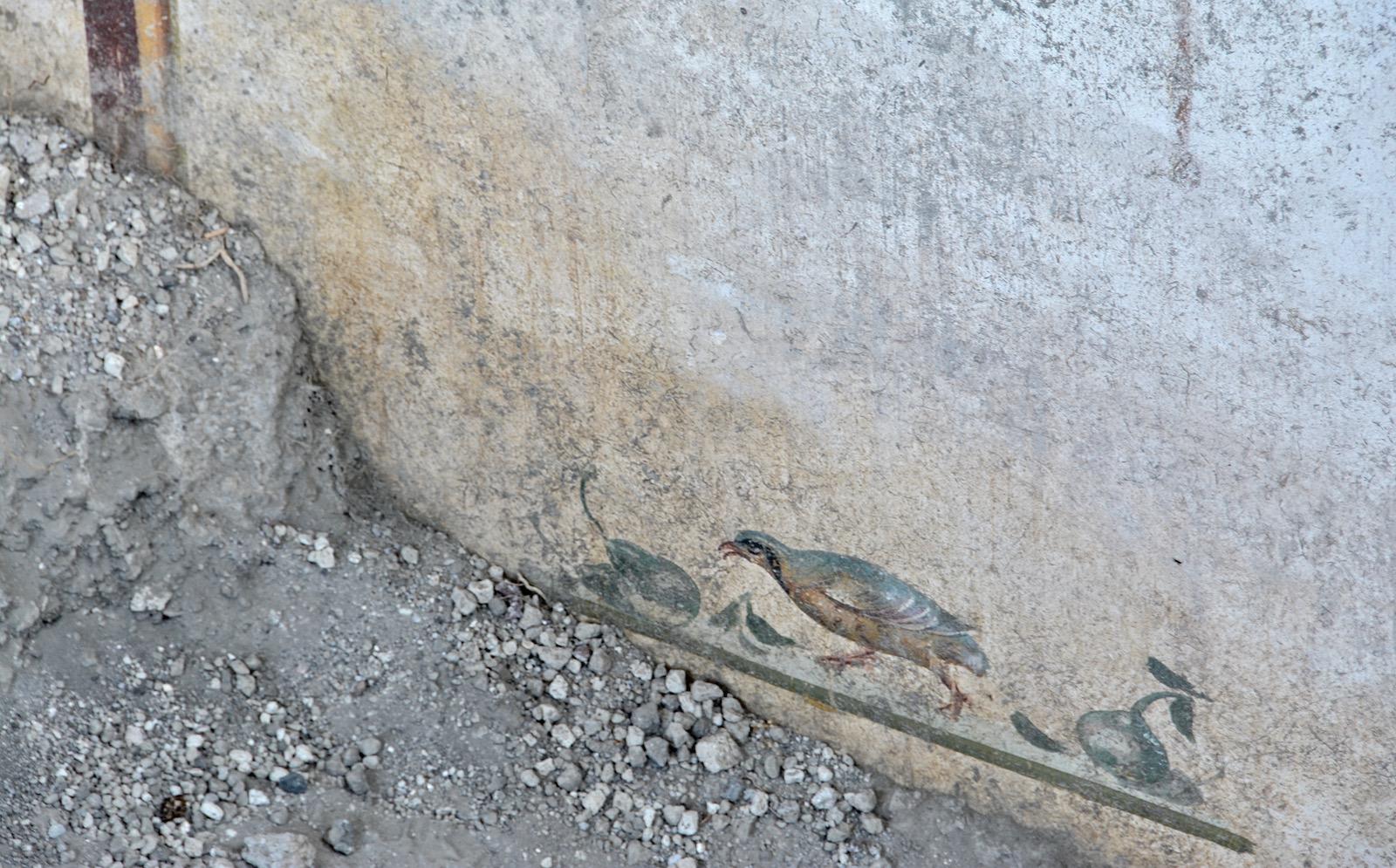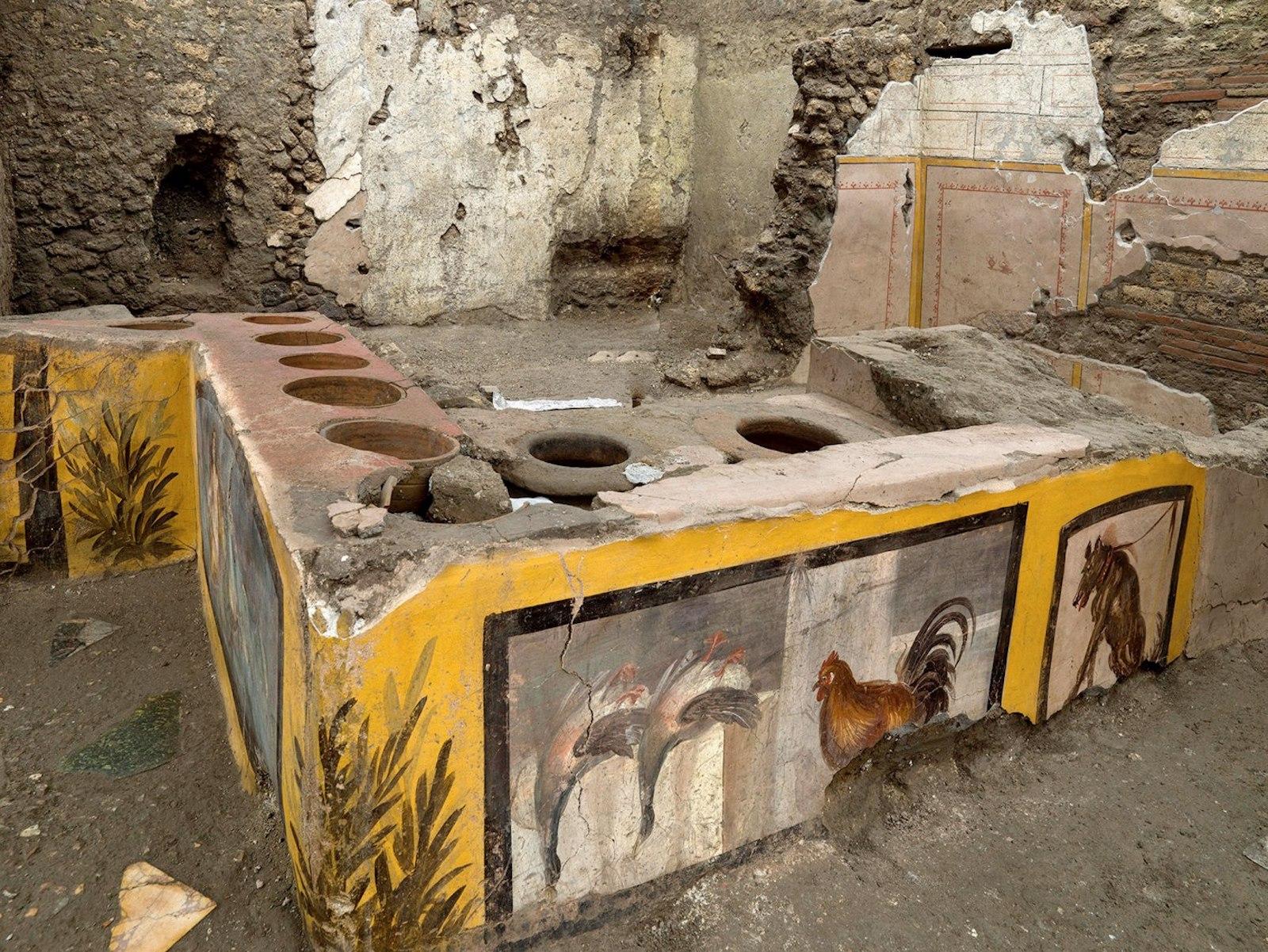Most visitors to Pompeii are unaware of the swathes of the unexcavated parts of the city but a glance at a map of Pompeii reveals two substantial areas within the city walls not crisscrossed by streets or marked with the outlines of insulae blocks and simply labeled as “unexcavated”. The boundary between the exposed and unexcavated parts of the site are defined by six-meter high escarpments revealing the cross-section of layers of compacted volcanic ash and tightly packed pumice stones.
These liminal areas have been the focus of attention in recent years and the surprising setting for a thrilling revival of excavation in Pompeii. Not since the 1980s has there been an archaeological dig that has broken the seal of the undisturbed layers of volcanic deposits with the hefty blow of a pickaxe.





